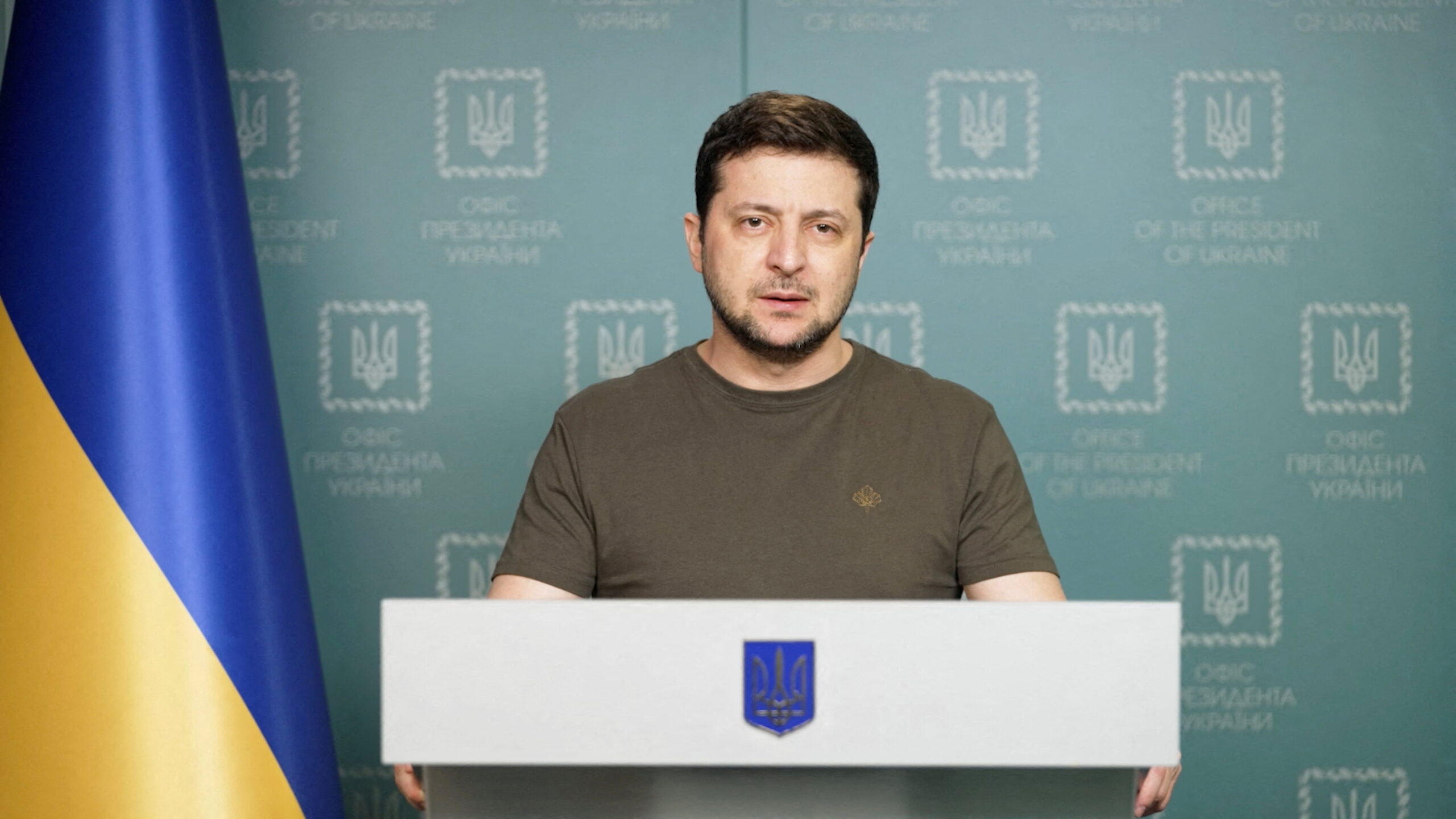

Summary
- A new Swiss Finance Institute working paper reviews the performance of 3,500 global stocks around the Russia-Ukraine war.
- In the US, investors expect the war to slow the transition to a low-carbon economy, while the opposite is true in the EU.
- ESG ratings have so far provided no predictor of stock market success, while companies with greater inflation and international trade exposure have underperformed.
Introduction
Russia’s invasion of Ukraine surprised many investors, with stock markets reacting very negatively throughout February and early March. The turbulence reflected uncertainty over how to navigate various layers of risk, such as exposure to Russia, oil and gas, renewables, inflation and more. Uncertainty remains, but a review of which stocks did and did not do well should offer clarity as we move forward.
This article is only available to Macro Hive subscribers. Sign-up to receive world-class macro analysis with a daily curated newsletter, podcast, original content from award-winning researchers, cross market strategy, equity insights, trade ideas, crypto flow frameworks, academic paper summaries, explanation and analysis of market-moving events, community investor chat room, and more.
Summary
- A new Swiss Finance Institute working paper reviews the performance of 3,500 global stocks around the Russia-Ukraine war.
- In the US, investors expect the war to slow the transition to a low-carbon economy, while the opposite is true in the EU.
- ESG ratings have so far provided no predictor of stock market success, while companies with greater inflation and international trade exposure have underperformed.
Introduction
Russia’s invasion of Ukraine surprised many investors, with stock markets reacting very negatively throughout February and early March. The turbulence reflected uncertainty over how to navigate various layers of risk, such as exposure to Russia, oil and gas, renewables, inflation and more. Uncertainty remains, but a review of which stocks did and did not do well should offer clarity as we move forward.
Such is the view of a new Swiss Finance Institute working paper. It focuses on the performance of 3,500 global stocks during the build-up (24 January-23 February), outbreak (24 February-8 March), and continuation phases (9 March-31 March) of the Russia-Ukraine war. To analyse performance, they use various text-based measures, stock returns and annual reports. The results offer a review of what happened but also a preview of the war’s future economic impact.
Data and Methodology
The core analysis relies on identifying three phases of the Russia-Ukraine war. These are identified using Google Trend search intensities and the percentage of earnings calls with mentions of the conflict. Combined, they yield the following dates for the three phases:
- ‘Build-up’: started on 24 January 2022 and finished the day before the war started.
- ‘Outbreak’: started on 24 February and finished as investor attention subsided after 8 March.
- ‘Continuation’: started on 9 March and finished at the end of the sample on 31 March.
Next, the authors collect firm characteristics and stock returns from Compustat on any firm that has a market cap over $10mn and a stock price larger than $1. In total, this leaves 14,500 firms across 59 countries. This is then whittled down to 3,500, leaving only firms for which there is conference call data and countries in which ESG score coverage is good.
From quarterly earnings conference calls (ECC) and annual reports (10K), the authors create text-based measures of a firm’s climate exposure using machine-learning algorithms. This climate exposure is divided into the transition risk (Trans) and physical risk (Phy). These measures have been shown in the literature to capture firm-level climate exposure variation better than other measures such as carbon intensities or ESG performance and risk scores.
The authors also collect ESG information, though. These include performance ESG measures from Refinitiv, MSCI and S&P Global. And they gather ESG risk measures from Sustainalytics and RepRisk, which capture a firm’s expose to ESG-related topics.
Lastly, the authors also create inflation, geopolitical and international exposure proxies. For inflation and geopolitical exposure, they count the total occurrences of specific terms during conference calls, such as ‘inflation’ or ‘war’. For international exposure, they use a text-based analysis on 10-K filings to count the number of times a country is mentioned, which they use to proxy a firm’s exposure to that country. They combine this with the percentage of revenues generated from international sales.
All-in-all, they collect information on a firm’s transitional and physical climate risk exposure, ESG exposure, inflation exposure, geopolitical risk exposure and international exposure. They then ask whether any of these factors can explain a firm’s stock price movements in each of the three phases of the Russia-Ukraine war.
Equity Performance
The authors begin with an overview of stock market performance during each of the three periods, by country and industry (Chart 1). For almost all countries, average equity returns were negative during the first two phases, and strongly positive thereafter. Energy stocks and utilities were the big winners overall, while automobiles, consumer services and durables performed worst.

The above represents the unconditional equity performance. Next, they turn to the equity performance conditional on the different exposure measures.
Climate Risk Exposure and ESG Ratings
On the climate transition risk, they find firms with a high exposure on average performed better during all three phases than their peers. In other words, the market priced a considerably protracted slowdown in the transition to a low-carbon economy, especially in the US.
The results differ markedly between the US and EU, though. Much has been made of Europe’s reliance on Russia’s oil and gas, so companies with a low transition risk actually outperformed during the outbreak period. That is, firms set to benefit from the transition to a low-carbon economy did relatively well, as the EU emphasised its move to renewables in response to the war.
The distinction between the US and EU was largest during the outbreak period. Since then, from 9-31 March, transition risk exposure has been no predictor of stock performance in these two countries, but it continues to be on a global level. Meanwhile, physical climate risk expose has had no bearing on performance throughout the war.
In terms of ESG ratings, which in recent years have been a good predictor for a company’s resilience to shocks, the authors find that European stocks with higher ESG ratings performed better during the outbreak. At a global level, this result is harder to disentangle, which implies that ESG ratings have so far been a poor predictor of firm performance during the war.
Inflation Exposure
The Russia-Ukraine war has directly added to inflation fears over concerns predominantly around food and energy supplies. But has a firm’s exposure to inflation affected its value? Yes, according to the authors. Firms that had talked about inflation more frequently on their earnings conference calls during 2021 did far worse during the outbreak period (Chart 2, %Inf). Inflation exposure has remained a predictor of performance thereafter, but to a lesser extent.

International Exposure, Sanctions and Exposure to War
In terms of international exposure, the authors find that firms which more frequently discussed Russia, Ukraine or the possibility of war in their conference calls during 2021 and 2022 performed significantly worse during the Outbreak (Chart 2, %War).
While international exposure was a predictor of poor stock market performance during the outbreak period, it has become a predictor of good stock market performance since, especially in the US. Clearly, the performance of these firms will continue to be tightly connected to the war narrative.
Lastly, the authors also look at the exposure of US firms to China, arguing that investors may be worried that China did not condemn the Russian invasion. The paper finds that exposure to China was negatively correlated to performance in the outbreak phase and beyond (Chart 2, #China).
Bottom Line
As the war in Ukraine continues, the performance of some firms will remain closely tied to changes in the war narrative. From the paper, these are firms that made it clear in conference calls and annual reports of their exposure. While they have recovered some of their losses since 9 March, that could change if the situation worsens.
Meanwhile, the paper shows other factors to be predictors of stock market performance. These are a firm’s exposure to climate risk, their exposure to inflation and their size. In other words, large firms whose performance is not linked to the transition to a low-carbon economy, and is not as exposed to inflationary pressures, are currently performing the best.
Sam van de Schootbrugge is a Macro Research Analyst at Macro Hive, currently completing his PhD in international finance. He has a master’s degree in economic research from the University of Cambridge and has worked in research roles for over 3 years in both the public and private sector.
